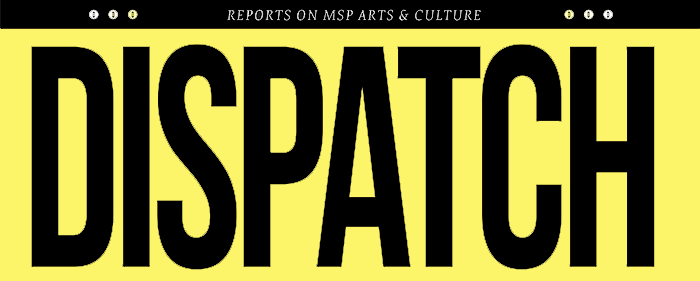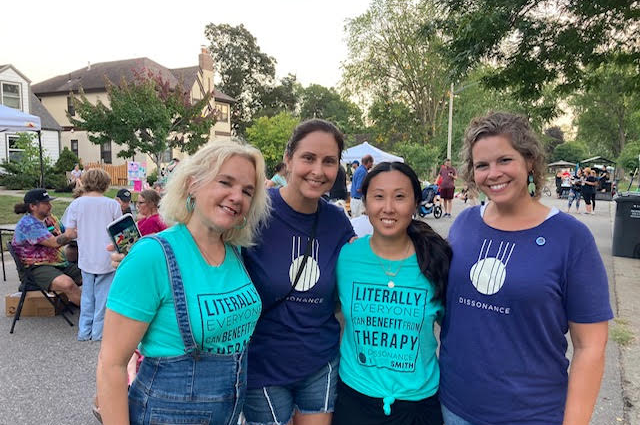Local orgs and artists are navigating harm reduction and paths to sobriety.
Words by Isabelle Wattenberg
Distributing syringes to individuals who are about to engage in substance use might raise some eyebrows. But in fact, this practice lies at the core of a growing drug recovery practice: harm reduction. Harm reduction aims to mitigate and reduce the harms involved in drug or substance use without demanding full abstinence and recovery. The practice acknowledges that not all individuals have the capacity to get into treatment or recovery right away. Instead, the aim is to ensure that drug administration is conducted as safely as possible–with clean equipment, in a safe environment, and within a community that knows how to administer overdose-reversing medicine if necessary.
Harm reduction is also taken a step further when looking more broadly at the challenges often faced by those struggling with substance use: Unemployment, homelessness, and isolation all often play a role in addiction and can be addressed in concert with efforts that directly affect drug administration.
To see this in action, see the Twin Cities Recovery Project (TCRP). The organization, which has offices on East Lake Street and North Broadway, provides a variety of harm reduction and recovery support services, including outreach and training so someone witnessing a drug overdose can effectively administer naloxone—commonly referred to by its prescription brand name, Narcan—as well as coach and peer training.
TCRP’s Program Manager Chris Burks wears many hats, but one key role is to serve as a spokesperson for how effective and powerful these services can be. While struggling with addiction, naloxone intervention saved Burk’s life six times. And once in recovery, job training led him to an internship with TCRP, which evolved into a full-time position.
Providing job opportunities and job support can be life changing for people with substance use disorder, Burks said. Often, people with records of substance use face employment discrimination that prevents them from gaining the stable income or housing necessary for fostering recovery.
“That was one of my barriers,” he says. “When [individuals] get sober and have to deal with the reality of addiction and some of the mistakes they’ve made, they’re in a bind—especially with finances.”
TCRP’s peer services and Peer-2-Peer program offers a dual solution of providing people in recovery with a path to employment and helping those not yet in recovery to find support or resources. Program participants, all of whom are in long-term recovery, receive education and funding for state certification as Recovery Specialists. They then work one-on-one with people suffering from substance use to navigate their specific situations. According to Burks, probation officers have reported positive experiences working with offenders who use peer coaches and they hope to expand the service to the full department.
“It really helps when you have someone to cross barriers,” Burks says. “Recovery is a lifelong process; it never ends. It’s a lifestyle.”
According to TCRP’s CEO, LaTricia Tate, the barriers to providing care and harm reduction services come from perceptions—both about individuals with substance use disorder and about the services TCRP provides—that aren’t easy to shake.
“We do a lot of outreach in North Minneapolis and one of the problems and things that concerns me is that people always say that those kids choose to be out there, and for me it’s not a choice,” Tate says. “We get to hear those stories and how they ended up out there, and it’s not always a pretty picture. [We have to] help individuals understand that addiction is a disease—look at it as if it’s cancer or diabetes. It’s something that has to be attacked and go into remission.”
TCRP has a personal and consistent strategy for connecting with people who could benefit from their services, by conducting reliable and nonjudgmental outreach to build relationships and trust with the community.
“What we’ve been told by individuals that we serve—they think we’re just another one of those organizations that’s coming in there to collect information and data about them and leave them,” Tate says. “[Burks] has been really good about continuing to go to the same location again and again, and the goal is to build relationships. We care, and we’re going to keep coming back.”
Tate said they’ve seen folks eventually come forward for recovery support, but smaller gestures—such as stopping by the office to watch a movie with the staff—is a positive sign.
“We win when they come off the street,” she says.
This focus on providing social support, regardless of recovery status, comes from the organization’s origins as a church basement social group for sober individuals and remains a core strategy—their Friday night Social Club organizes DJs, game tournaments, and fellowship to offer a judgment-free, empathetic place for connection.
This type of harm reduction that takes the form of safe social spaces and gatherings is also core to the mission of Dissonance, a non-profit dedicated to breaking stigmas about mental health in the arts. From hosting sober parties to fostering conversation about mental health and substance use among artists, Dissonance aims to normalize sobriety and make it easier for artists struggling with substance use to get support and help. According to Dissonance founder Sarah Souder Johnson, who is also a therapist at Sentier Psychotherapy, artists face particular challenges because of the expectation—often internalized—that struggle and pain are crucial elements of creating great art.
“Many people never stop to question whether or not they could be successful if they weren’t coping with substances, but I’ve never met an artist who said working on their understanding of self and reducing harmful behaviors in their lives did anything but unlock new layers of creativity,” Souder Johnson says.
MaLLy, a Minneapolis-based hip hop artist, applauds the work of venues and organizations like Dissonance that are providing more sober spaces and resources. MaLLy stopped using substances seven years ago, and he notes there remains a near-ubiquitous expectation of substance use in the music industry that can encourage addiction.
“It’s highly uncommon to perform at a venue, hangout, or lounge at a function without [alcohol or marijuana] being in the mix. In some ways, subliminally, it’s almost encouraged in order to have a good time,” he says. He pointed out that music itself has a history of glorifying substances, from jazz to hip hop to rock.
MaLLy says he dreams of a time when sobriety becomes common and socially acceptable enough that it loses its novelty, and hopefully dismantles some of the barriers to exploring that path.
“Funny enough, the minute people ask ‘Why’d you decide to quit?’ you inadvertently start giving a TedTalk on your life story and you become the center of attention at a party where everyone might be drunk or high,” he says. “I hope that we continue to have more real conversations in spaces and events in support of or encouragement of a sober lifestyle, how fly it is, and to remove the assumption that a tragic moment is the reason you chose sobriety.”
To care for the other aspects of instability artists experience, Dissonance partners with arts organizations such as Springboard for the Arts—and even individual musicians or bands—to spread awareness of, and access to, mental health support, among other things.
“We love when artists ask us to show up at their album release shows to provide mental health resources,” Souder Johnson says. “It’s another way we break down stigmas and provide resources to people who aren’t necessarily looking, but may benefit from them.”
Other places help with the fuller spectrum needed for those battling mental illness, addiction, or financial instability, too. Southside Harm Reduction—which delivers syringe, naloxone, and hygiene products to those in need across the metro area—and Serving Those Serving, which provides mental health, employee assistance resources, and naloxone training to hospitality industry employees and employers.
These points of connection point to the value of harm reduction when it takes the form of community—whether that’s providing judgment-free space from those still struggling with addiction or offering spaces where substance-free lifestyles are accommodated without compromising frivolity, but also without fanfare.
Recovery Resources
Twin Cities Recovery Project: twincitiesrecoveryproject.org
Serving Those Serving: servingthoseserving.org
Southside Harm Reduction: southsideharmreduction.orgDissonance- dissonance.org

